Zhixin Zhang
UniAPO: Unified Multimodal Automated Prompt Optimization
Aug 25, 2025
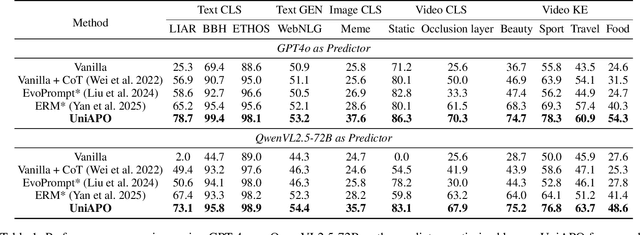
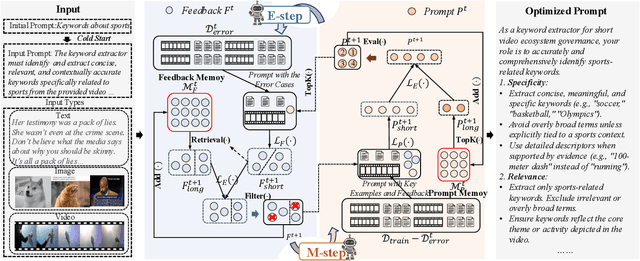
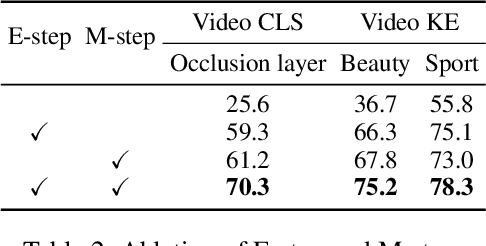
Abstract:Prompting is fundamental to unlocking the full potential of large language models. To automate and enhance this process, automatic prompt optimization (APO) has been developed, demonstrating effectiveness primarily in text-only input scenarios. However, extending existing APO methods to multimodal tasks, such as video-language generation introduces two core challenges: (i) visual token inflation, where long visual token sequences restrict context capacity and result in insufficient feedback signals; (ii) a lack of process-level supervision, as existing methods focus on outcome-level supervision and overlook intermediate supervision, limiting prompt optimization. We present UniAPO: Unified Multimodal Automated Prompt Optimization, the first framework tailored for multimodal APO. UniAPO adopts an EM-inspired optimization process that decouples feedback modeling and prompt refinement, making the optimization more stable and goal-driven. To further address the aforementioned challenges, we introduce a short-long term memory mechanism: historical feedback mitigates context limitations, while historical prompts provide directional guidance for effective prompt optimization. UniAPO achieves consistent gains across text, image, and video benchmarks, establishing a unified framework for efficient and transferable prompt optimization.
Filter-And-Refine: A MLLM Based Cascade System for Industrial-Scale Video Content Moderation
Jul 23, 2025Abstract:Effective content moderation is essential for video platforms to safeguard user experience and uphold community standards. While traditional video classification models effectively handle well-defined moderation tasks, they struggle with complicated scenarios such as implicit harmful content and contextual ambiguity. Multimodal large language models (MLLMs) offer a promising solution to these limitations with their superior cross-modal reasoning and contextual understanding. However, two key challenges hinder their industrial adoption. First, the high computational cost of MLLMs makes full-scale deployment impractical. Second, adapting generative models for discriminative classification remains an open research problem. In this paper, we first introduce an efficient method to transform a generative MLLM into a multimodal classifier using minimal discriminative training data. To enable industry-scale deployment, we then propose a router-ranking cascade system that integrates MLLMs with a lightweight router model. Offline experiments demonstrate that our MLLM-based approach improves F1 score by 66.50% over traditional classifiers while requiring only 2% of the fine-tuning data. Online evaluations show that our system increases automatic content moderation volume by 41%, while the cascading deployment reduces computational cost to only 1.5% of direct full-scale deployment.
Mitigating Fine-tuning Risks in LLMs via Safety-Aware Probing Optimization
May 22, 2025Abstract:The significant progress of large language models (LLMs) has led to remarkable achievements across numerous applications. However, their ability to generate harmful content has sparked substantial safety concerns. Despite the implementation of safety alignment techniques during the pre-training phase, recent research indicates that fine-tuning LLMs on adversarial or even benign data can inadvertently compromise their safety. In this paper, we re-examine the fundamental issue of why fine-tuning on non-harmful data still results in safety degradation. We introduce a safety-aware probing (SAP) optimization framework designed to mitigate the safety risks of fine-tuning LLMs. Specifically, SAP incorporates a safety-aware probe into the gradient propagation process, mitigating the model's risk of safety degradation by identifying potential pitfalls in gradient directions, thereby enhancing task-specific performance while successfully preserving model safety. Our extensive experimental results demonstrate that SAP effectively reduces harmfulness below the original fine-tuned model and achieves comparable test loss to standard fine-tuning methods. Our code is available at https://github.com/ChengcanWu/SAP.
Stackelberg Game Preference Optimization for Data-Efficient Alignment of Language Models
Feb 25, 2025Abstract:Aligning language models with human preferences is critical for real-world deployment, but existing methods often require large amounts of high-quality human annotations. Aiming at a data-efficient alignment method, we propose Stackelberg Game Preference Optimization (SGPO), a framework that models alignment as a two-player Stackelberg game, where a policy (leader) optimizes against a worst-case preference distribution (follower) within an $\epsilon$-Wasserstein ball, ensuring robustness to (self-)annotation noise and distribution shifts. SGPO guarantees $O(\epsilon)$-bounded regret, unlike Direct Preference Optimization (DPO), which suffers from linear regret growth in the distribution mismatch. We instantiate SGPO with the Stackelberg Self-Annotated Preference Optimization (SSAPO) algorithm, which iteratively self-annotates preferences and adversarially reweights synthetic annotated preferences. Using only 2K seed preferences, from the UltraFeedback dataset, i.e., 1/30 of human labels in the dataset, our method achieves 35.82% GPT-4 win-rate with Mistral-7B and 40.12% with Llama3-8B-Instruct within three rounds of SSAPO.
Debt Collection Negotiations with Large Language Models: An Evaluation System and Optimizing Decision Making with Multi-Agent
Feb 25, 2025



Abstract:Debt collection negotiations (DCN) are vital for managing non-performing loans (NPLs) and reducing creditor losses. Traditional methods are labor-intensive, while large language models (LLMs) offer promising automation potential. However, prior systems lacked dynamic negotiation and real-time decision-making capabilities. This paper explores LLMs in automating DCN and proposes a novel evaluation framework with 13 metrics across 4 aspects. Our experiments reveal that LLMs tend to over-concede compared to human negotiators. To address this, we propose the Multi-Agent Debt Negotiation (MADeN) framework, incorporating planning and judging modules to improve decision rationality. We also apply post-training techniques, including DPO with rejection sampling, to optimize performance. Our studies provide valuable insights for practitioners and researchers seeking to enhance efficiency and outcomes in this domain.
Vision Search Assistant: Empower Vision-Language Models as Multimodal Search Engines
Oct 28, 2024



Abstract:Search engines enable the retrieval of unknown information with texts. However, traditional methods fall short when it comes to understanding unfamiliar visual content, such as identifying an object that the model has never seen before. This challenge is particularly pronounced for large vision-language models (VLMs): if the model has not been exposed to the object depicted in an image, it struggles to generate reliable answers to the user's question regarding that image. Moreover, as new objects and events continuously emerge, frequently updating VLMs is impractical due to heavy computational burdens. To address this limitation, we propose Vision Search Assistant, a novel framework that facilitates collaboration between VLMs and web agents. This approach leverages VLMs' visual understanding capabilities and web agents' real-time information access to perform open-world Retrieval-Augmented Generation via the web. By integrating visual and textual representations through this collaboration, the model can provide informed responses even when the image is novel to the system. Extensive experiments conducted on both open-set and closed-set QA benchmarks demonstrate that the Vision Search Assistant significantly outperforms the other models and can be widely applied to existing VLMs.
CPFD: Confidence-aware Privileged Feature Distillation for Short Video Classification
Oct 07, 2024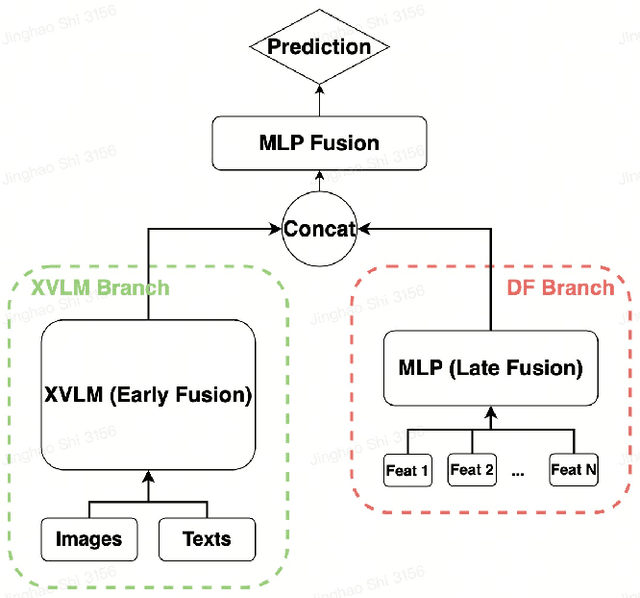


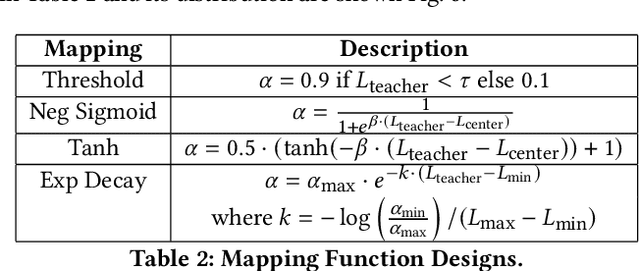
Abstract:Dense features, customized for different business scenarios, are essential in short video classification. However, their complexity, specific adaptation requirements, and high computational costs make them resource-intensive and less accessible during online inference. Consequently, these dense features are categorized as `Privileged Dense Features'.Meanwhile, end-to-end multi-modal models have shown promising results in numerous computer vision tasks. In industrial applications, prioritizing end-to-end multi-modal features, can enhance efficiency but often leads to the loss of valuable information from historical privileged dense features. To integrate both features while maintaining efficiency and manageable resource costs, we present Confidence-aware Privileged Feature Distillation (CPFD), which empowers features of an end-to-end multi-modal model by adaptively distilling privileged features during training. Unlike existing privileged feature distillation (PFD) methods, which apply uniform weights to all instances during distillation, potentially causing unstable performance across different business scenarios and a notable performance gap between teacher model (Dense Feature enhanced multimodal-model DF-X-VLM) and student model (multimodal-model only X-VLM), our CPFD leverages confidence scores derived from the teacher model to adaptively mitigate the performance variance with the student model. We conducted extensive offline experiments on five diverse tasks demonstrating that CPFD improves the video classification F1 score by 6.76% compared with end-to-end multimodal-model (X-VLM) and by 2.31% with vanilla PFD on-average. And it reduces the performance gap by 84.6% and achieves results comparable to teacher model DF-X-VLM. The effectiveness of CPFD is further substantiated by online experiments, and our framework has been deployed in production systems for over a dozen models.
InteractiveVideo: User-Centric Controllable Video Generation with Synergistic Multimodal Instructions
Feb 05, 2024Abstract:We introduce $\textit{InteractiveVideo}$, a user-centric framework for video generation. Different from traditional generative approaches that operate based on user-provided images or text, our framework is designed for dynamic interaction, allowing users to instruct the generative model through various intuitive mechanisms during the whole generation process, e.g. text and image prompts, painting, drag-and-drop, etc. We propose a Synergistic Multimodal Instruction mechanism, designed to seamlessly integrate users' multimodal instructions into generative models, thus facilitating a cooperative and responsive interaction between user inputs and the generative process. This approach enables iterative and fine-grained refinement of the generation result through precise and effective user instructions. With $\textit{InteractiveVideo}$, users are given the flexibility to meticulously tailor key aspects of a video. They can paint the reference image, edit semantics, and adjust video motions until their requirements are fully met. Code, models, and demo are available at https://github.com/invictus717/InteractiveVideo
Online Vectorized HD Map Construction using Geometry
Dec 06, 2023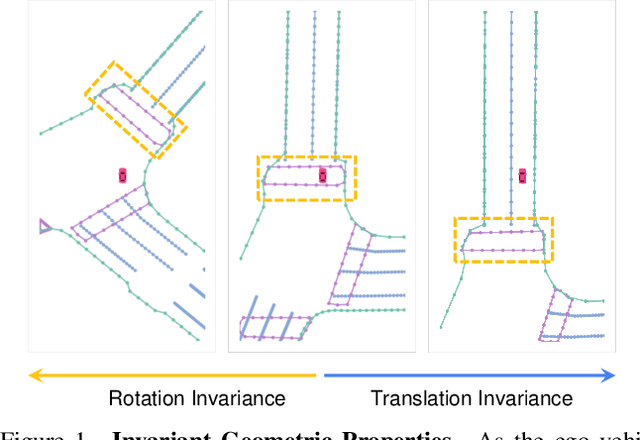
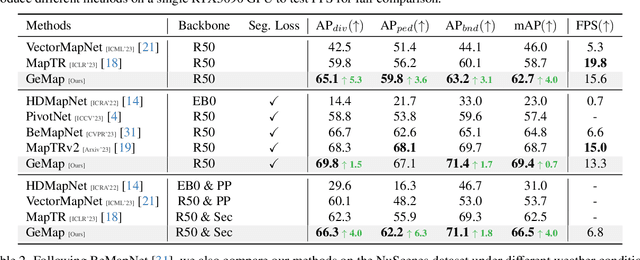
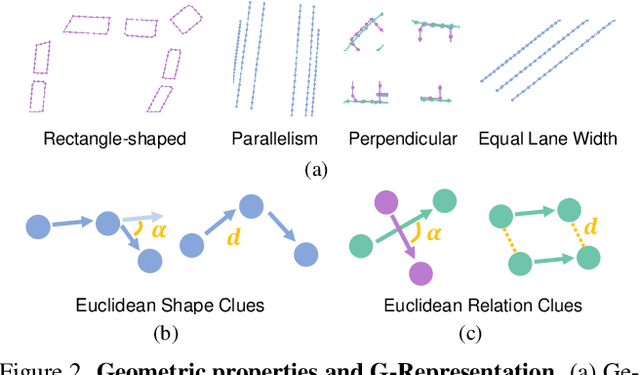

Abstract:The construction of online vectorized High-Definition (HD) maps is critical for downstream prediction and planning. Recent efforts have built strong baselines for this task, however, shapes and relations of instances in urban road systems are still under-explored, such as parallelism, perpendicular, or rectangle-shape. In our work, we propose GeMap ($\textbf{Ge}$ometry $\textbf{Map}$), which end-to-end learns Euclidean shapes and relations of map instances beyond basic perception. Specifically, we design a geometric loss based on angle and distance clues, which is robust to rigid transformations. We also decouple self-attention to independently handle Euclidean shapes and relations. Our method achieves new state-of-the-art performance on the NuScenes and Argoverse 2 datasets. Remarkably, it reaches a 71.8% mAP on the large-scale Argoverse 2 dataset, outperforming MapTR V2 by +4.4% and surpassing the 70% mAP threshold for the first time. Code is available at https://github.com/cnzzx/GeMap
Multi-task deep learning for large-scale building detail extraction from high-resolution satellite imagery
Oct 29, 2023



Abstract:Understanding urban dynamics and promoting sustainable development requires comprehensive insights about buildings. While geospatial artificial intelligence has advanced the extraction of such details from Earth observational data, existing methods often suffer from computational inefficiencies and inconsistencies when compiling unified building-related datasets for practical applications. To bridge this gap, we introduce the Multi-task Building Refiner (MT-BR), an adaptable neural network tailored for simultaneous extraction of spatial and attributional building details from high-resolution satellite imagery, exemplified by building rooftops, urban functional types, and roof architectural types. Notably, MT-BR can be fine-tuned to incorporate additional building details, extending its applicability. For large-scale applications, we devise a novel spatial sampling scheme that strategically selects limited but representative image samples. This process optimizes both the spatial distribution of samples and the urban environmental characteristics they contain, thus enhancing extraction effectiveness while curtailing data preparation expenditures. We further enhance MT-BR's predictive performance and generalization capabilities through the integration of advanced augmentation techniques. Our quantitative results highlight the efficacy of the proposed methods. Specifically, networks trained with datasets curated via our sampling method demonstrate improved predictive accuracy relative to those using alternative sampling approaches, with no alterations to network architecture. Moreover, MT-BR consistently outperforms other state-of-the-art methods in extracting building details across various metrics. The real-world practicality is also demonstrated in an application across Shanghai, generating a unified dataset that encompasses both the spatial and attributional details of buildings.
 Add to Chrome
Add to Chrome Add to Firefox
Add to Firefox Add to Edge
Add to Edge